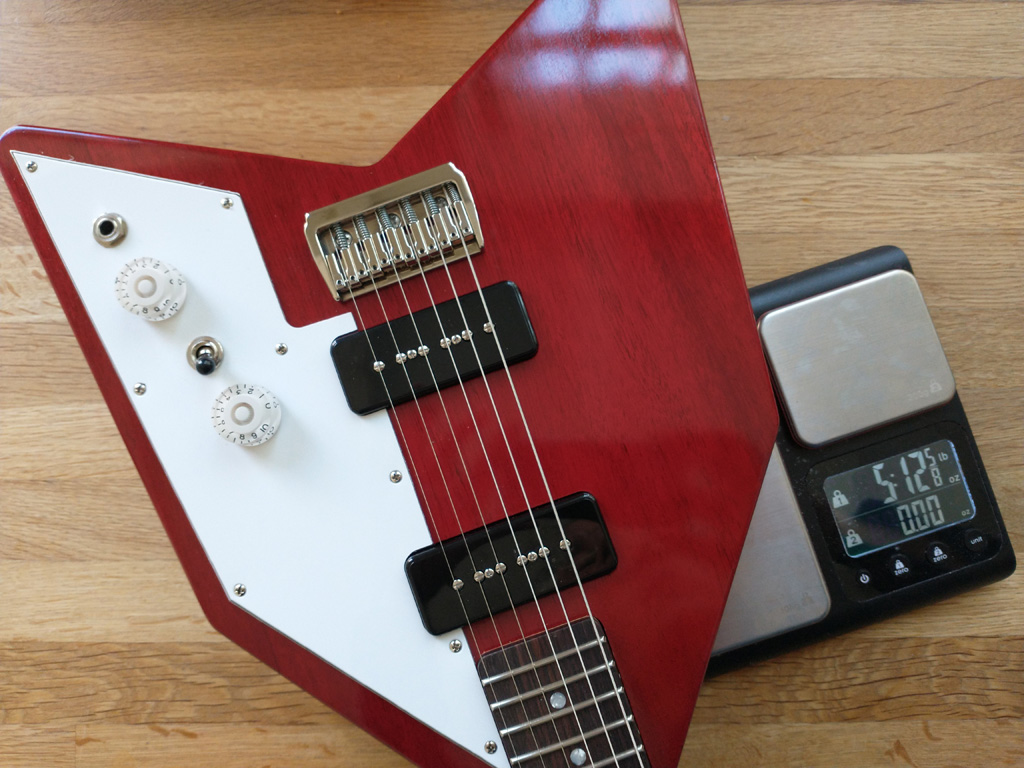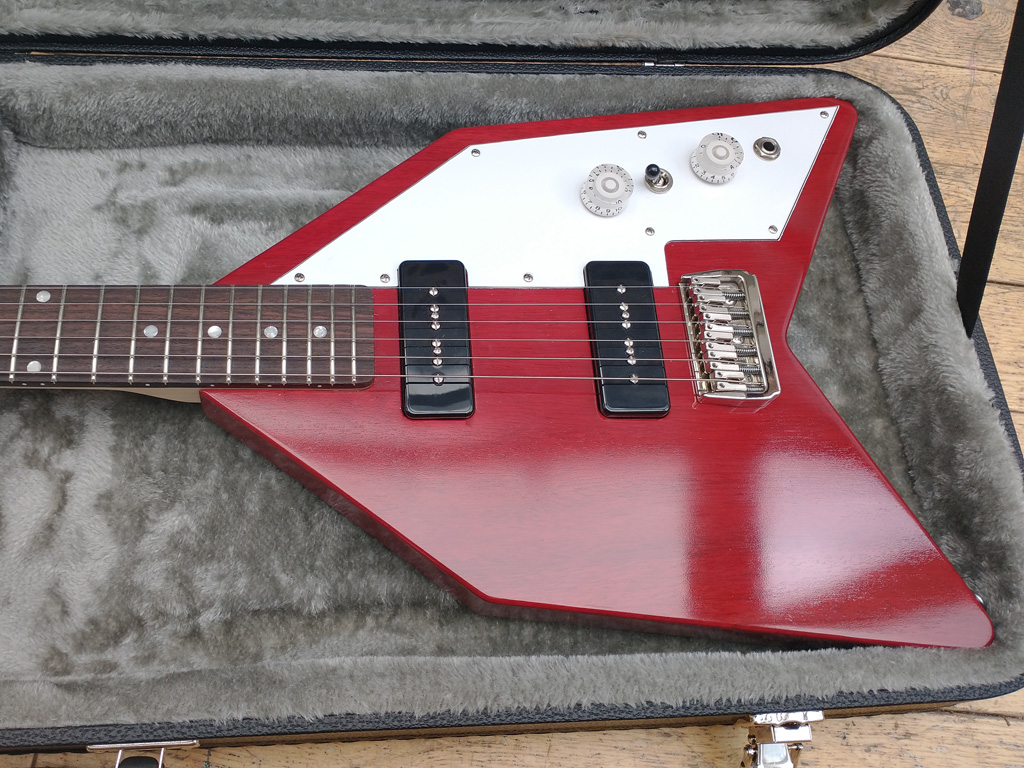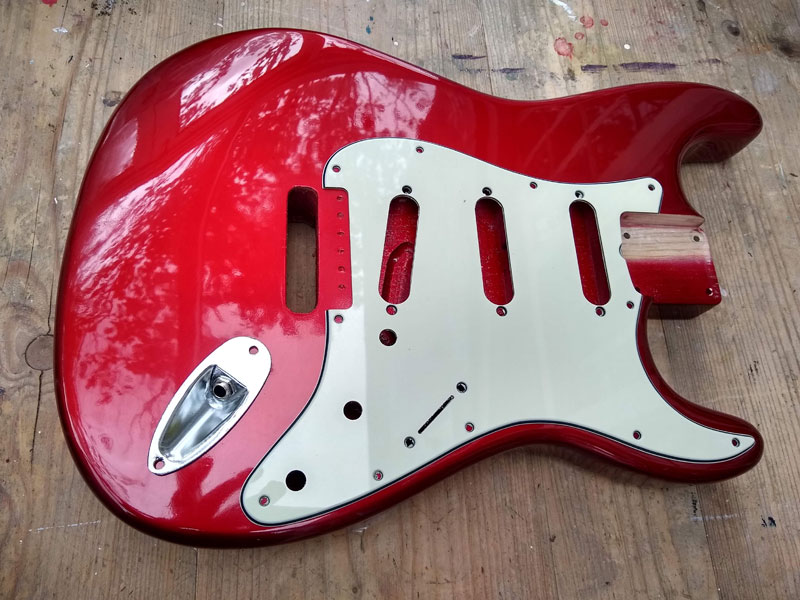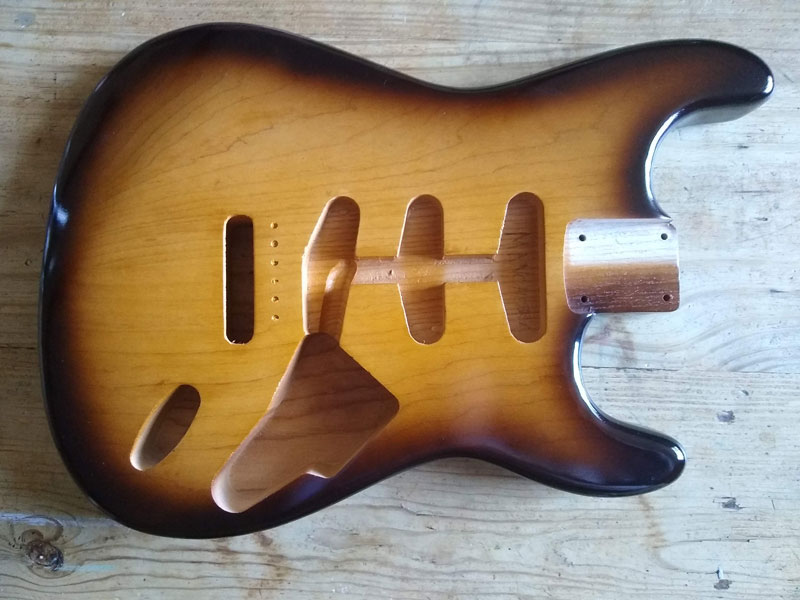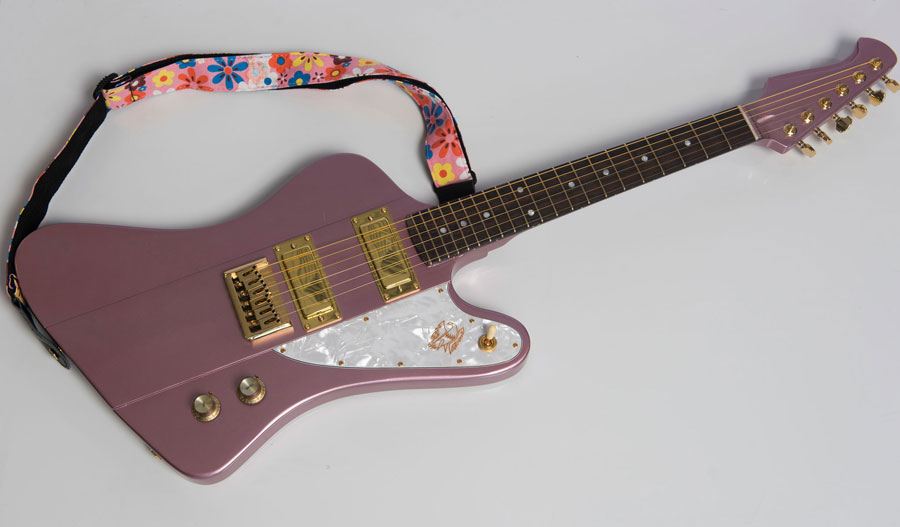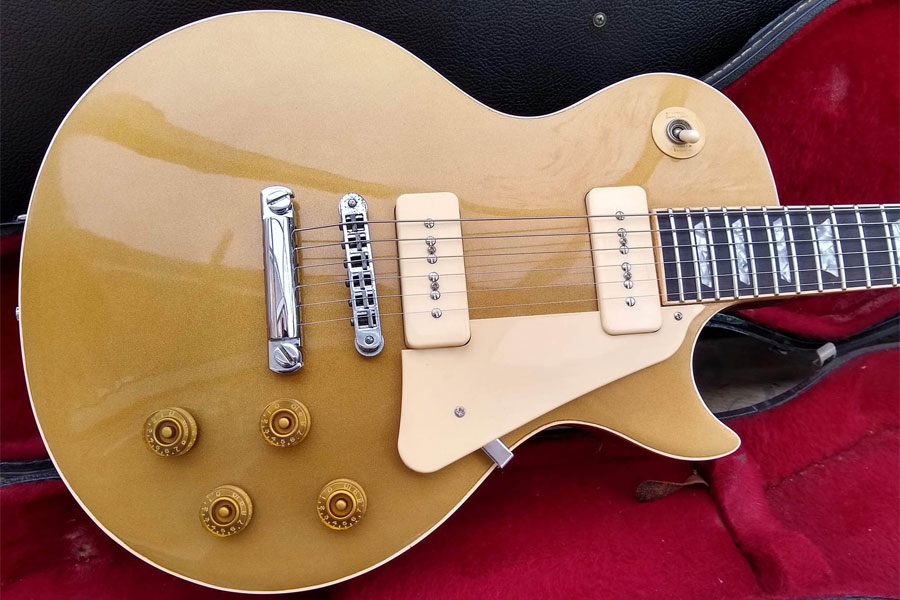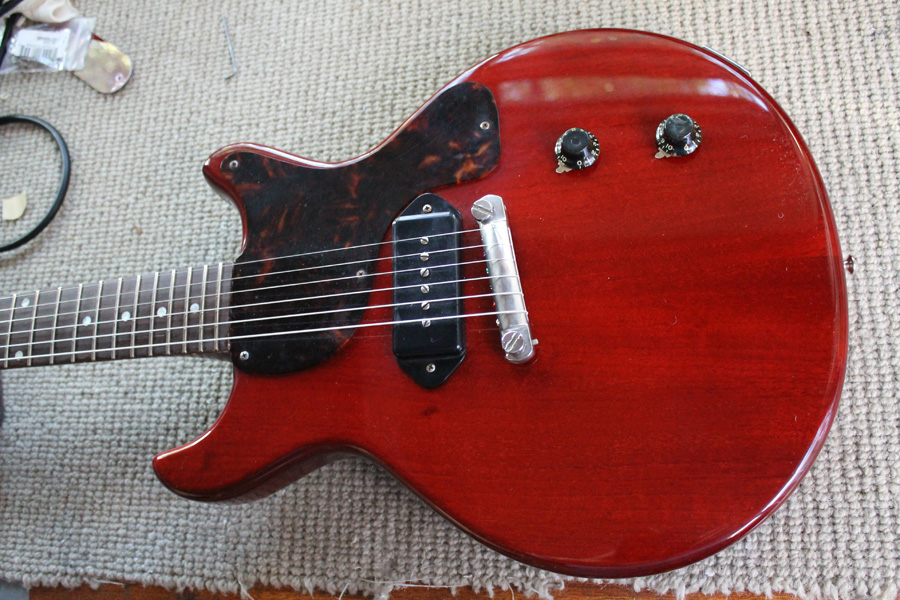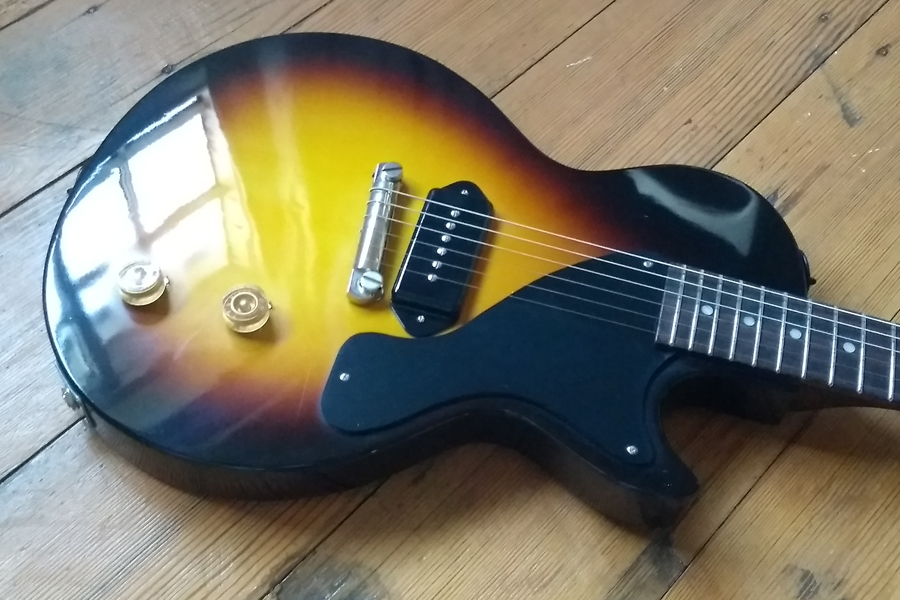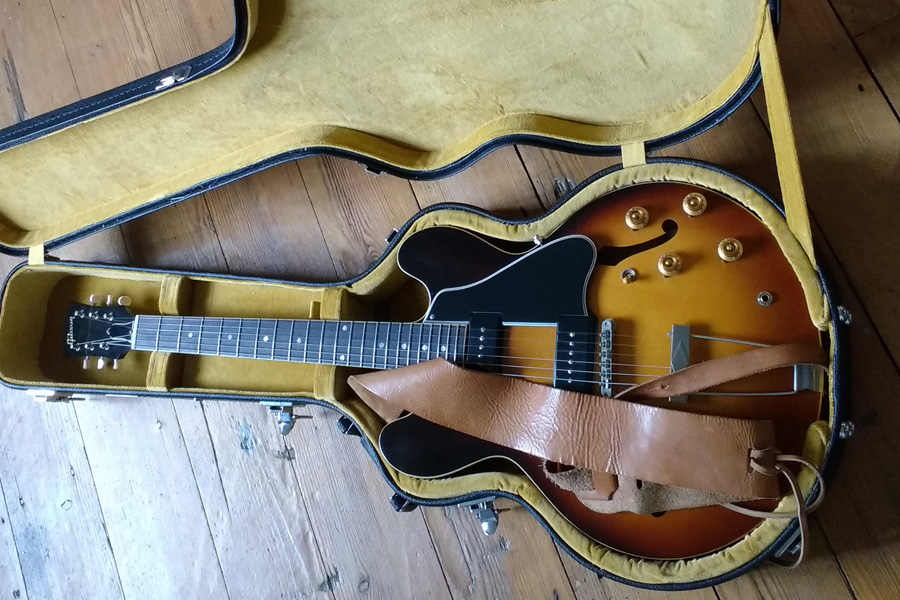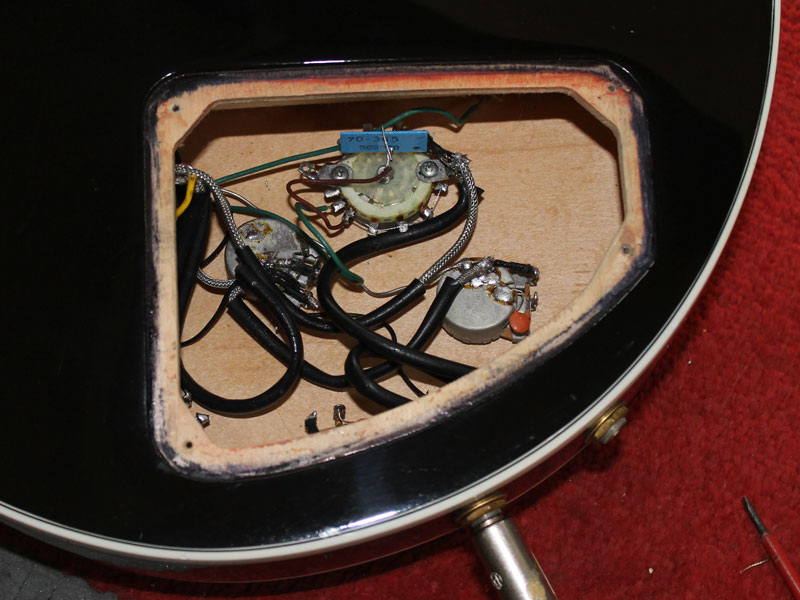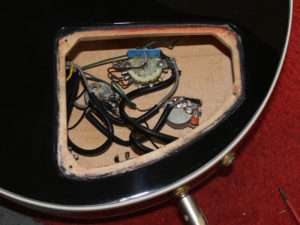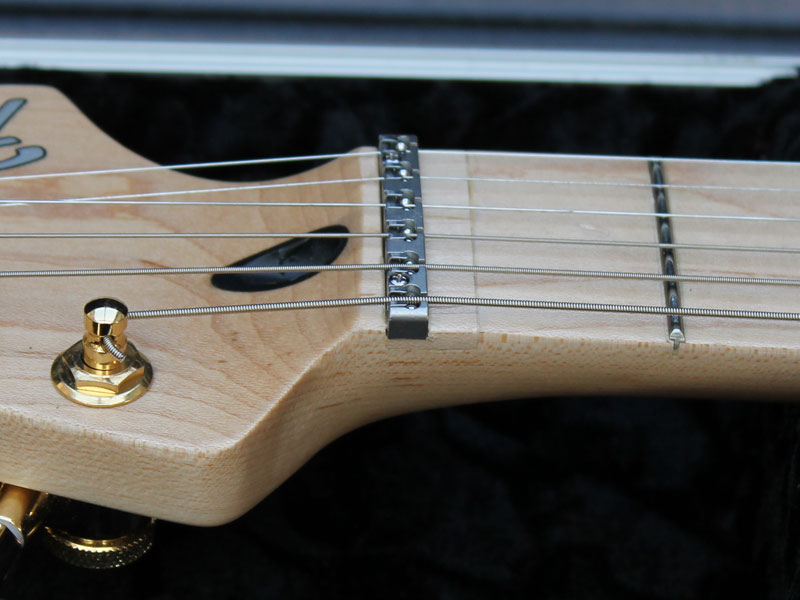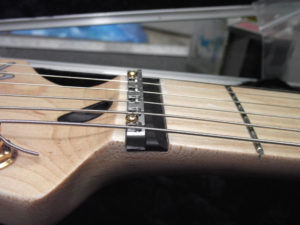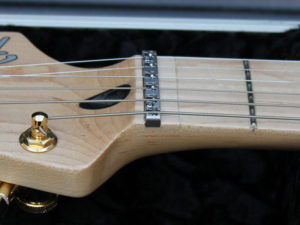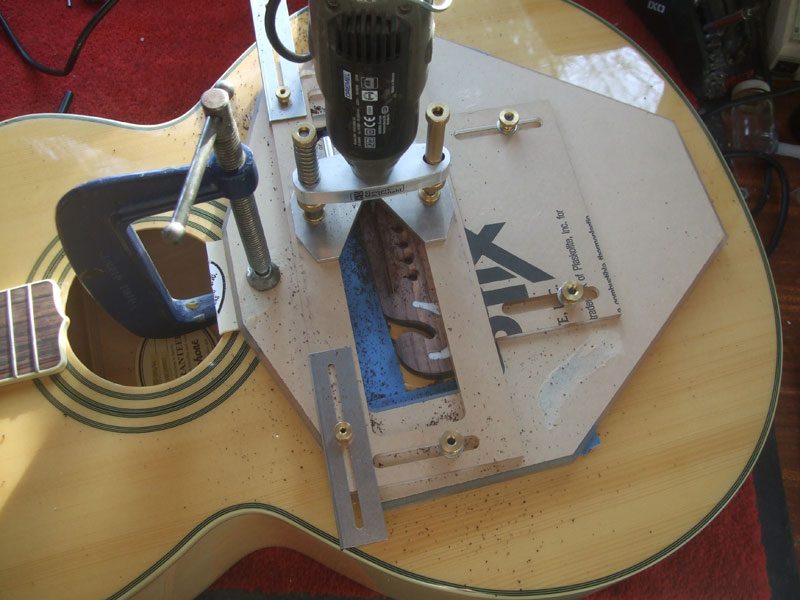
Ozzy Lister – guitar and bass repair
The owner of this Gibson Lucille wanted to get a better sound from his guitar. Although position “1” on the Gibson Varitone switch is supposed to be bypass, it does leave the choke in the circuit which loses volume and precious tone.
As the guitar’s owner didn’t find the stereo feature of the guitar useful, there was an opportunity to convert the guitar to mono, and use the now redundant other half of the Varitone switch to switch the choke in and out of the circuit.
I found a post on the Les Paul Forum where someone had done a similar job on his Gibson ES-345 and kindly provided a wiring diagram.
The modified guitar now has a lot more volume in the bypass position and suffers no loss of tone.
A little knowledge is a dangerous thing, or so they say.
The owner of this guitar fitted a Fender LSR roller nut himself and I have to say showed some skill in cutting the wood away.
Unfortunately he misunderstood how the nut should be fitted and cut away far too much wood.
I tidied the bottom of the hole let in a piece of maple to fill it. I profiled the top of the fillet using a radiused sanding block before gluing then once the glue had dried, accurately cutting the slot for the LSR nut.
The repair was lacquered over using my Clear Satin nitrocellulose lacquer and flatted back smooth.
I did consider replacing the maple up to the first fret to hide the join, but the issue is only cosmetic, the join cannot be felt and to replace more wood than necessary would have increased both risk and cost.
The finished job looks like this. I have used no shims and the action at the first fret is spot on.
Here’s another Epiphone left hand conversion I did recently, this time a natural finish guitar. I invested in a Stewart Macdonald saddle routing jig and yes, one day I’ll take the protective paper off it!
I used a Graphtec Tusq nut and saddle as I like the consistency of the material, plus it’s easier to work than bone.
You might be able to see from the picture below that the factory had placed the bridge slightly askew.
Also, in order to get a low action, it was necessary to remove about 3mm from the top of the bridge. Luckily the bridges on these guitars are really thick and sturdy so removing a bit of height will cause no problems.

